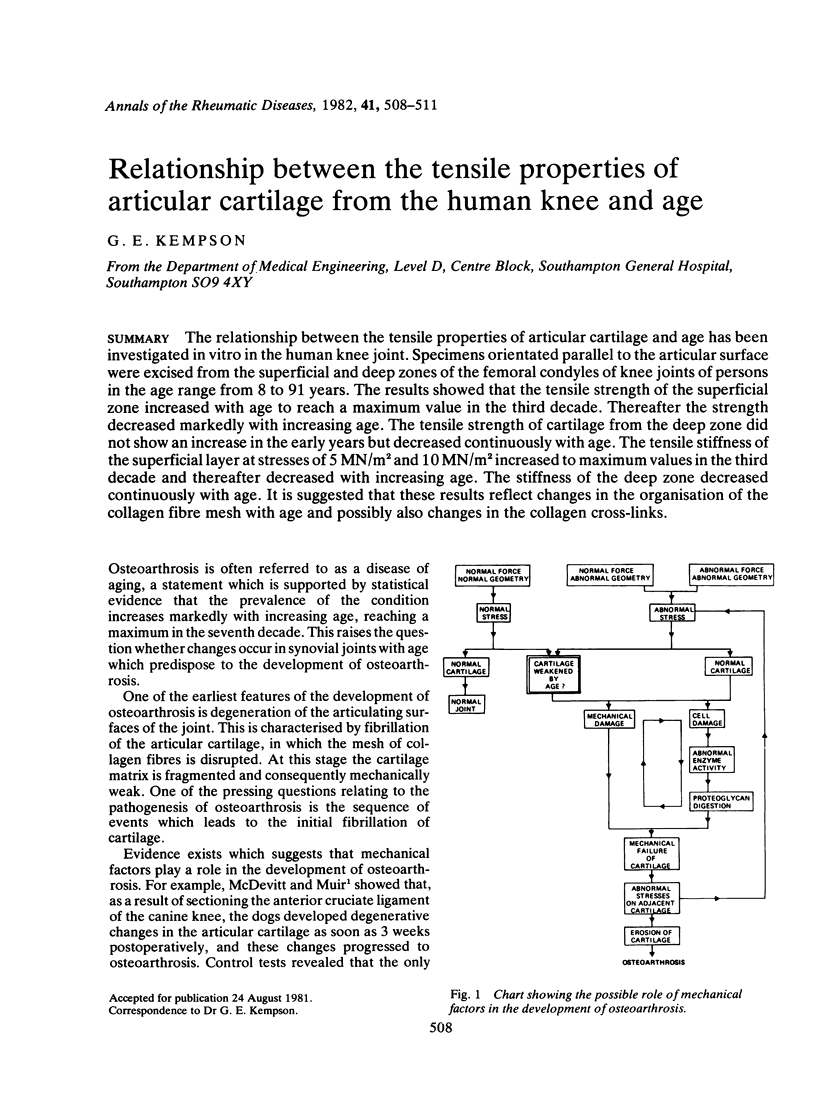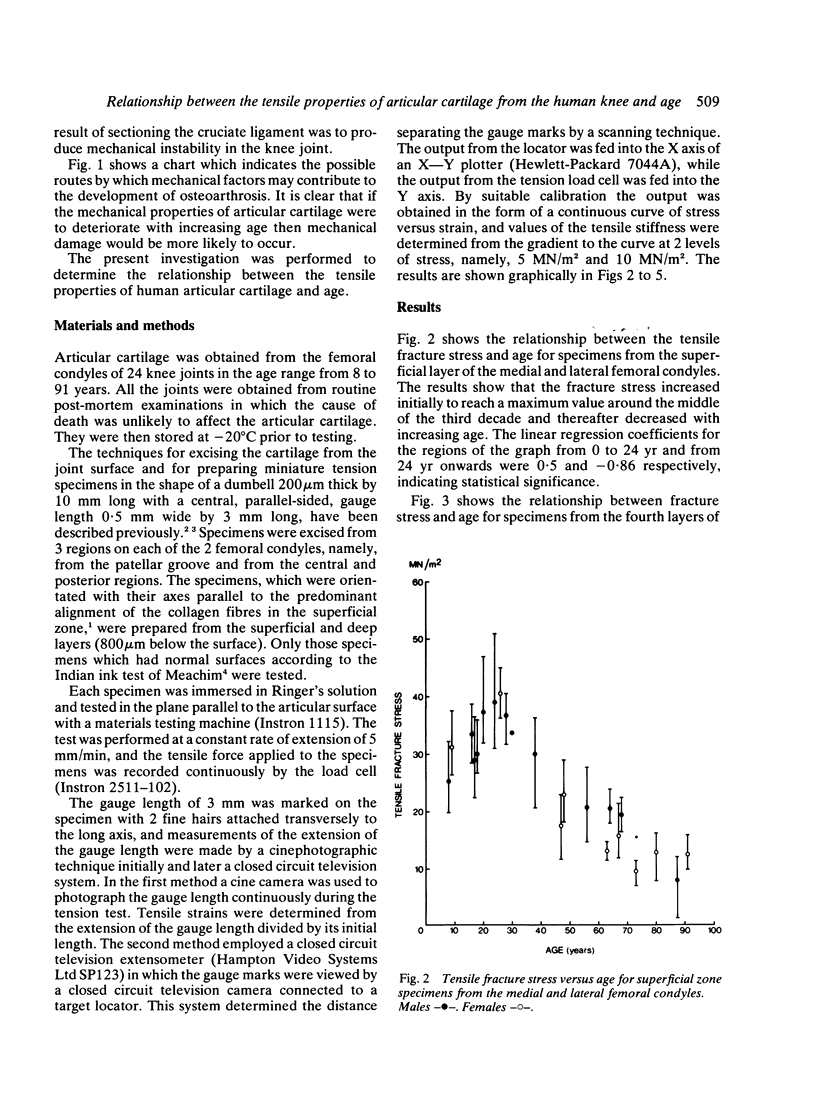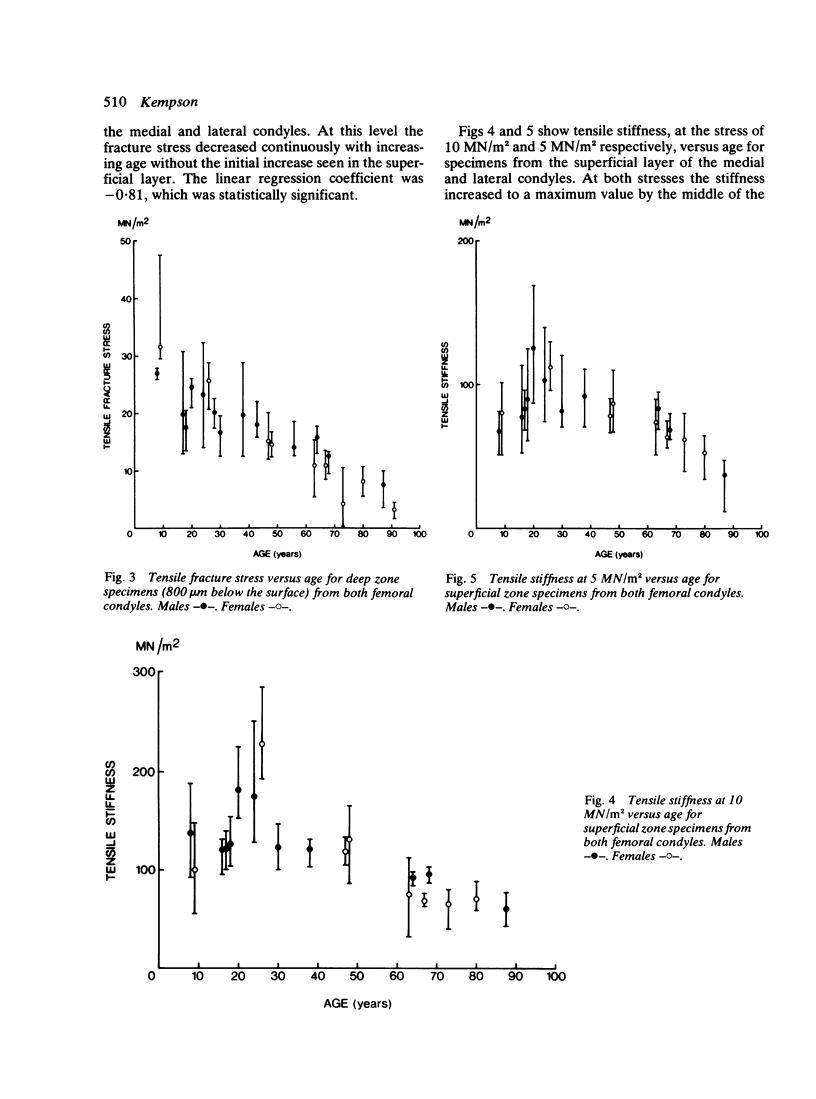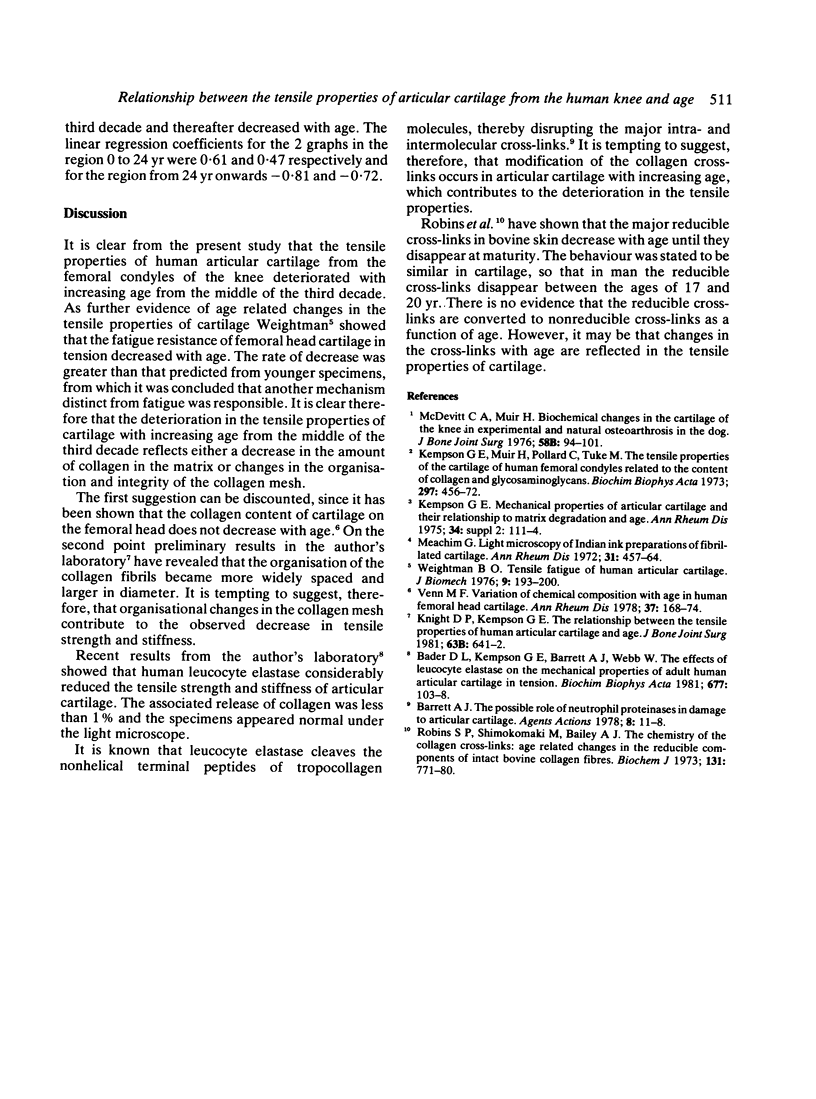Abstract
The relationship between the tensile properties of articular cartilage and age has been investigated in vitro in the human knee joint. Specimens orientated parallel to the articular surface were excised from the superficial and deep zones of the femoral condyles of knee joints of persons in the age range from 8 to 91 years. The results showed that the tensile strength of the superficial zone increased with age to reach a maximum value in the third decade. Thereafter the strength decreased markedly with increasing age. The tensile strength of cartilage from the deep zone did not show an increase in the early years but decreased continuously with age. The tensile stiffness of the superficial layer at stresses of 5 MN/m2 and 10 MN/m2 increased to maximum values in the third decade and thereafter decreased with increasing age. The stiffness of the deep zone decreased continuously with age. It is suggested that these results reflect changes in the organisation of the collagen fibre mesh with age and possibly also changes in the collagen cross-links.
Full text
PDF



Selected References
These references are in PubMed. This may not be the complete list of references from this article.
- Bader D. L., Kempson G. E., Barrett A. J., Webb W. The effects of leucocyte elastase on the mechanical properties of adult human articular cartilage in tension. Biochim Biophys Acta. 1981 Sep 18;677(1):103–108. doi: 10.1016/0304-4165(81)90150-1. [DOI] [PubMed] [Google Scholar]
- Barrett A. J. The possible role of neutrophil proteinases in damage to articular cartilage. Agents Actions. 1978 Jan;8(1-2):11–18. doi: 10.1007/BF01972396. [DOI] [PubMed] [Google Scholar]
- Kempson G. E., Muir H., Pollard C., Tuke M. The tensile properties of the cartilage of human femoral condyles related to the content of collagen and glycosaminoglycans. Biochim Biophys Acta. 1973 Feb 28;297(2):456–472. doi: 10.1016/0304-4165(73)90093-7. [DOI] [PubMed] [Google Scholar]
- McDevitt C. A., Muir H. Biochemical changes in the cartilage of the knee in experimental and natural osteoarthritis in the dog. J Bone Joint Surg Br. 1976 Feb;58(1):94–101. doi: 10.1302/0301-620X.58B1.131804. [DOI] [PubMed] [Google Scholar]
- Meachim G. Light microscopy of Indian ink preparations of fibrillated cartilage. Ann Rheum Dis. 1972 Nov;31(6):457–464. doi: 10.1136/ard.31.6.457. [DOI] [PMC free article] [PubMed] [Google Scholar]
- Robins S. P., Shimokomaki M., Bailey A. J. The chemistry of the collagen cross-links. Age-related changes in the reducible components of intact bovine collagen fibres. Biochem J. 1973 Apr;131(4):771–780. doi: 10.1042/bj1310771. [DOI] [PMC free article] [PubMed] [Google Scholar]
- Venn M. F. Variation of chemical composition with age in human femoral head cartilage. Ann Rheum Dis. 1978 Apr;37(2):168–174. doi: 10.1136/ard.37.2.168. [DOI] [PMC free article] [PubMed] [Google Scholar]
- Weightman B. Tensile fatigue of human articular cartilage. J Biomech. 1976;9(4):193–200. doi: 10.1016/0021-9290(76)90004-x. [DOI] [PubMed] [Google Scholar]


